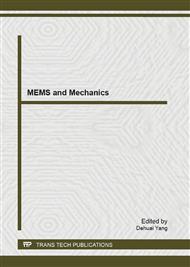p.483
p.487
p.493
p.499
p.504
p.509
p.516
p.523
p.528
Research on Inertia Projecting Devices to Eject Water Column for Hydraulic Impact Tests
Abstract:
In order to eject water column with regular shape for hydraulic impact tests, inertia projecting devices are developed. In these devices, a projecting cylinder filled with water is accelerated under huge push of gas gun. When arriving to set speed, the cylinder would impact buffer and suddenlly halt. Then water column in the cylinder will eject under inertial function. In the device for ejecting smaller water column, as impact force is small, projecting cylinder is made of high strength steel material, and can be used again after impacting buffer made of rubber material. In the device for ejecting larger water column, as impact force is huge, projecting cylinder is made of low strength steel material, and will damage after impacting buffer made of high strength material. Using these devices, tests are respectively conducted to eject water column with masses of 30kg and 800kg, and speed and shape of water column all satisfyed requirement of .hydraulic impact tests.
Info:
Periodical:
Pages:
504-508
Citation:
Online since:
June 2013
Authors:
Price:
Сopyright:
© 2013 Trans Tech Publications Ltd. All Rights Reserved
Share:
Citation:


